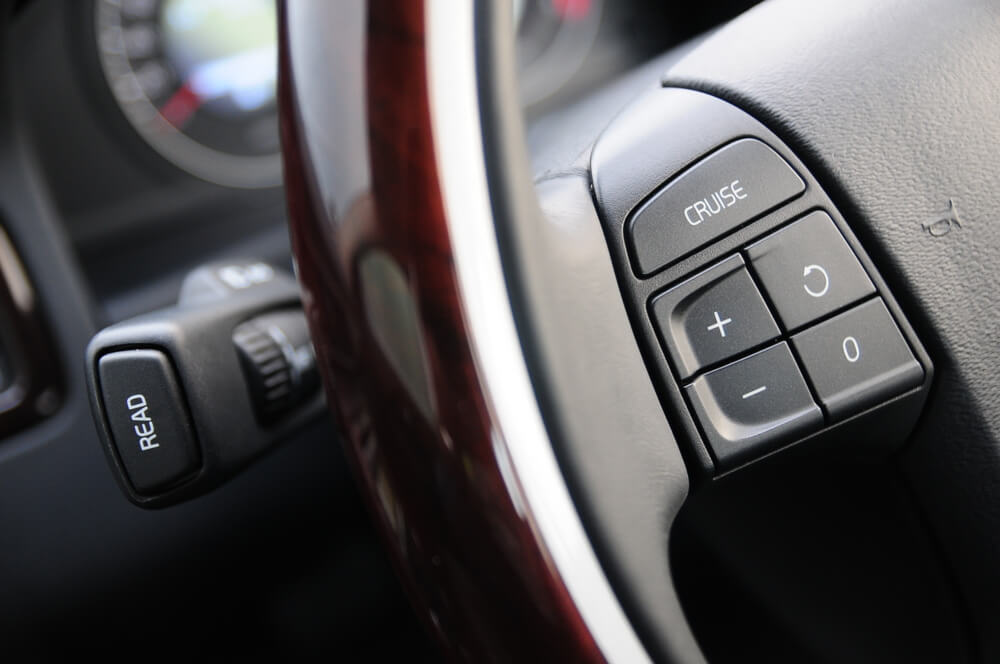Cruise control is a feature that now comes standard on many models of cars. Many drivers prefer to drive a vehicle that has cruise control installed because of its convenience. If you are a commuter, cruise control will allow you to drive at a constant speed. Cruise control is an electronic device that allows a vehicle’s driver to lock the accelerator on a specific speed and take his or her foot off of the pedal. Cruise control is designed to be used on roadways without frequent stops, turns, or required driving maneuvers. An interstate highway is the ideal location to use your vehicle’s cruise control feature.

Here’s how to apply cruise control: 7-Step Guide to Cruise Control
1 First, evaluate the driving conditions on the interstate. Cruise control is not designed to be used in hazardous weather conditions. Use good judgment when deciding to apply your vehicle’s cruise control. Check for any oncoming obstacles before applying cruise control, particularly if it is your first time to use the system.
Using cruise control in such weather conditions would be a bad call even if the road seems empty
2 Build your speed. If driving on an interstate, the speed limit is generally between 55 and 70 miles per hour. This speed range is ideal for cruise control. Do not attempt to set your vehicle’s cruise control at a speed that is above the legal limit. This is both dangerous and unwise.
3 Once you reach your desired speed, turn the cruise control system on. In most vehicles, the buttons that control the cruise control system appears on the steering wheel. You should check your owner’s manual and locate these buttons when the car is not being driven to avoid an accident.
In most cases the system is switched on by pressing a bigger button which says cruise
4 After the cruise control system is activated, set the cruise control. This will likely entail simply pressing another button on the steering wheel. After the cruise control is set, you may remove your foot from the accelerator. The car should maintain its speed.
5 When driving a vehicle that is being accelerated by a cruise control system, it is important to watch the road carefully. Your reaction time will be slower because you will have to deactivate the cruise control system before you slow down or stop.
6 To accelerate while on cruise control, most models will either have additional buttons or allow the driver to briefly engage the accelerator pedal.
7 To decelerate, either tap the appropriate button on the cruise control system or quickly apply the brake. As a safety precaution, almost every model of car will deactivate the cruise control as soon as the brake is applied.
Using cruise control is a great way to control your speed when driving on the interstate. Setting your vehicle’s cruise control on a reasonable speed will also reduce fuel consumption by preventing sudden accelerations and decelerations. Be aware that it is not a good idea to use cruise control if you are likely to suffer from driver fatigue. Many drivers feel that being able to relax their legs while driving and not have to closely monitor their speed increases their likelihood of becoming fatigued at the wheel.
Finally, here is a video about adaptive cruise control, which you can find in more and more new cars each year, as a step to autonomous cars in the future:
Source: Andrei Zakhareuski (m.driving-tests)










